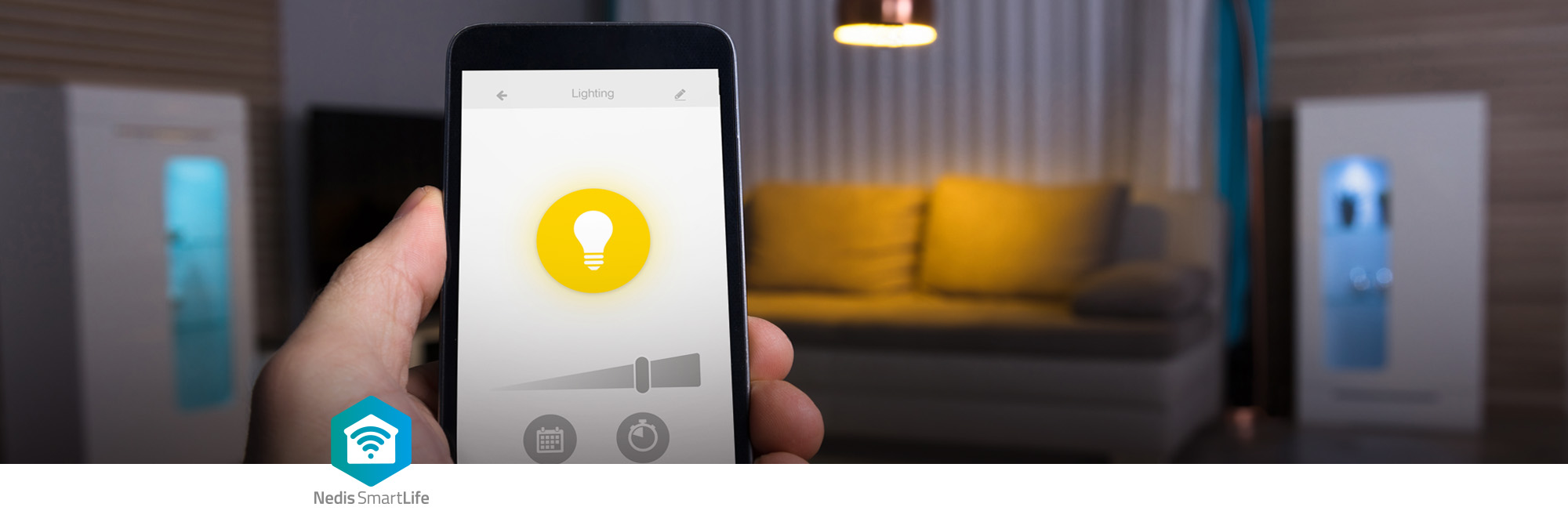
Exploring the Smart Home radio standards
Buying your first smart product that helps you to create a smarter life is most often not too difficult. Most products do help you in specific cases. A light turns on and off when the sun goes down and your doorbell notifies you via the app when someone is at your door.
Many of our users in the meantime experienced; smart home can be addicting. So, we see a rapid increase in the number of smart products per household. That is where it starts to become a bit more complicated. Wi-Fi, Zigbee, Bluetooth®, Z-Wave, all kinds of ways to connect your smart products. But what should you use? What is the best choice for your smart home?
Current options
Nowadays there are many different protocols available, we will mention and explain some of the most used ones:
- Wi-Fi
- Bluetooth®
- Zigbee
In a nutshell:
Wi-Fi
This is the most known wireless communication language used in our homes. It connects your smartphone, laptop, tablet with the internet. You simply install a router in your house and connect the Wi-Fi products using the same network and password.
You can use Wi-Fi as an easy way to start using some smart home devices.


Bluetooth®
Mostly known for connecting our smartphones to car kits and speakers. Very easy to setup a connection because no password is required. But as you might have experienced when your phone leaves the room where the speaker plays music, it disconnects and the music will stop. In order to control Bluetooth enabled products you will need to be close to the product itself.
The range of the signal is less then Wi-Fi. Bluetooth® is used to transfer small amounts of data. Streaming audio will work perfectly but sending a video stream will not be possible. Because of this characteristic it uses way less power as Wi-Fi does. That means most Wi-Fi products need to be powered by a wall socket at all times (or have rather large battery capacity), where Bluetooth® devices can operate on small batteries that are easy and quick to replace.
Zigbee
Another way products can interact with each other is via Zigbee. The biggest advantage is that when you start building a smart home on Zigbee that it will not interfere with the Wi-Fi network in your house. When using multiple smart home products to Wi-Fi network, you might see connection errors on your smart tv or other Wi-Fi devices. Simply because the network is too crowded. Imagine standing in a crowded bar and try to say something to a person at the other end of the bar. This is no problem in an empty bar but will not work with a lot of other people (connected devices).

Using Zigbee as a separate smart home network has more advantages. The signal uses low energy. So you can use it for products like motion sensors, lights, smoke detectors, etc. Most products run on a small replaceable battery, some on regular net power. Same as Bluetooth®, low energy use also means low data volume to be transferred. So sending small commands like turning on the light or send a signal when motion is detected is possible, but sending video over a Zigbee network will not work.
A Zigbee product, let’s say a lightbulb, requires a gateway or hub (same product, just another word) to connect to the internet. See this gateway as a bridge between your smart home product and the router in your house. The gateway is connected to the router on one end and to the smart home product on the other end.
Another advantage of Zigbee is the mesh network possibility. This means that smart home Zigbee products can operate as a signal repeater. So you can extend the range of the network by installing more Zigbee products. Products can communicate with multiple products. For example: if one product loses power, the connection will remain stable to all other products. Please be aware this only applies to 230 volt powered Zigbee products like light bulbs and smart plugs. Sensors on battery will be part of the Zigbee network but do not function as a repeater.
| Wi-Fi | Bluetooth® | Zigbee | |
|---|---|---|---|
| Range | Mid | Short | Long |
| Gateway required? | No | No | Yes |
| Used for: | All products that are hardwired and need to transfer large amounts of data like cameras |
Local control of products like speakers and smart watches |
Larger smart home systems with many products |
A one-stop app for your smart home.
The main advantage about our Nedis SmartLife app is that it can deal with all the communication protocols mentioned above. You can even combine different products that use other protocols. For example: your Nedis outdoor security camera will connect via Wi-Fi and the lights in your kitchen are connected via Zigbee. In our app you are able to connect them. This can be useful to create extra safety. When the camera detects a person, your kitchen lights will turn on to simulate someone is at home.
How to choose?
Some products are offered in both Wi-Fi and Zigbee versions. To choose between those two it is important to think a bit ahead. For example, for lighting, start with 1 Wi-Fi bulb to experience the advantages of smart lighting. It won’t take long before you want to extend your smart home. At that moment think about your next move. Create a wish list and prioritise the products you want to replace for a smart variant. Then consider which communication protocol will fit your needs.